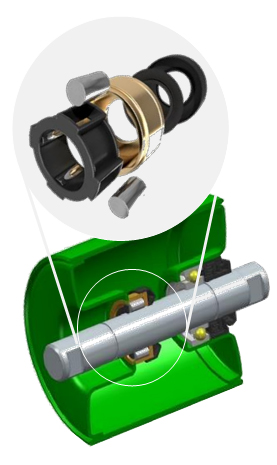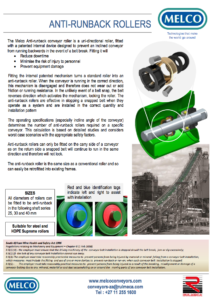The Melco Anti-runback conveyor roller is a uni-directional roller, fitted with a patented internal device designed to prevent an inclined conveyor from running backwards in the event of a belt break. Fitting it will:
- Reduce downtime
- Minimise the risk of injury to personnel
- Prevent equipment damage
Fitting the internal patented mechanism turns a standard roller into an anti-runback roller. When the conveyor is running in the correct direction, this mechanism is disengaged and therefore does not wear out or add friction or running resistance. In the unlikely event of a belt snap, the belt reverses direction which activates the mechanism, locking the roller.
The anti-runback rollers are effective in stopping a snapped belt when they operate as a system and are installed in the correct quantity and installation pattern.
Suitable for steel and HDPE SUPREME rollers
The anti-runback roller is the same size as a conventional roller and so can easily be retrofitted into existing frames.
Red and blue identification tags indicate left and right to assist with installation.





